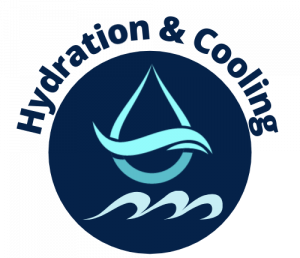Meta Description: Learn essential football hydration strategies to prevent dehydration, optimize performance, and maintain player safety with proper fluid replacement techniques.
_______________________________
Football Hydration Basics
Understanding Football Hydration Needs
Football players face unique hydration challenges due to the intense nature of the sport, equipment requirements, and variable environmental conditions. Proper fluid replacement is essential for peak performance, safety, and recovery.
Players typically lose 2-3 liters of sweat per hour during intense training or competition, especially in hot and humid conditions. This fluid loss must be addressed through strategic hydration protocols before, during, and after activity.
Pre-Game Hydration Strategy
Proper hydration begins long before kickoff. Players should follow these guidelines:
- Consume 16-20 oz (500-600 ml) of fluid 2-3 hours before exercise
- Drink an additional 8-10 oz (250-300 ml) 10-20 minutes before activity
- Include electrolytes (particularly sodium) in pre-game fluids to help retention
- Monitor urine color – pale yellow indicates good hydration status
Coaches should establish team-wide hydration protocols to ensure all players enter games properly hydrated. Individual hydration needs vary based on body size, sweat rate, and environmental conditions.
During-Game Hydration Requirements
Maintaining hydration during football games presents challenges due to limited breaks and equipment constraints. Effective strategies include:
- Utilizing all available breaks (timeouts, quarter changes, halftime) for fluid consumption
- Aiming for 7-10 oz (200-300 ml) of fluid every 15-20 minutes when possible
- Incorporating both water and sports drinks to replace electrolytes
- Using personal water bottles to track individual fluid intake
Football players should understand that thirst is not an early indicator of dehydration. By the time thirst occurs, performance may already be declining. Players need to drink according to schedule rather than waiting for thirst signals.
Post-Game Rehydration
Recovery hydration is critical for subsequent performance and should include:
- Consumption of 16-24 oz (500-750 ml) of fluid for every pound (0.5 kg) of body weight lost
- Including sodium in recovery fluids to enhance retention and restore electrolyte balance
- Continuing rehydration for several hours post-exercise
- Combining fluid intake with appropriate post-exercise nutrition
Weighing players before and after practices or games provides valuable data to customize hydration plans. This monitoring helps identify heavy sweaters who may need more aggressive rehydration strategies.
Environmental Considerations for Football Hydration
Environmental factors significantly impact hydration needs:
- Heat and humidity: Increase fluid requirements substantially
- Cold weather: Can mask dehydration signs and reduce voluntary fluid intake
- Altitude: Increases fluid loss through respiration and often requires additional intake
- Indoor vs. outdoor: Each presents unique challenges for player hydration
Teams should adjust hydration protocols based on environmental conditions and consider modified practice schedules during extreme weather. Football equipment, particularly helmets and pads, increases core temperature and sweat rates, requiring additional fluid consumption.
Recognizing Dehydration in Football Players
Coaches, athletic trainers, and players should be aware of dehydration symptoms:
- Decreased performance and increased perceived effort
- Muscle cramps and reduced coordination
- Headache and dizziness
- Dark urine or reduced urine output
- Unusual fatigue or irritability
Early intervention for mild dehydration can prevent progression to more serious heat-related illnesses. Staff should be trained to recognize warning signs and implement emergency protocols when necessary.
Hydration Equipment for Football Teams
Proper equipment facilitates effective team hydration:
- Multiple water stations with both water and electrolyte beverages
- Individual, labeled water bottles to track consumption
- Portable cooling and hydration stations for sideline use
- Misting fans and shade structures for extreme conditions
- Hydration backpacks for remote training locations
Investing in quality hydration equipment demonstrates a team’s commitment to player health and performance. Easy access to fluids encourages better hydration habits among players.
Customizing Hydration Plans for Different Positions
Hydration needs vary by position and individual player characteristics:
- Linemen: Often have higher sweat rates due to greater body mass and equipment load
- Skill positions: May cover more distance but generate less metabolic heat
- Specialists: Have unique patterns of exertion and rest requiring tailored approaches
Individual sweat testing can help identify players with high sodium losses who may need additional electrolyte supplementation. Position coaches should work with athletic trainers to develop position-specific fluid replacement guidelines.
Educating Players on Hydration Importance
Player education is fundamental to effective hydration programs:
- Conduct pre-season hydration workshops
- Demonstrate the performance impact of dehydration
- Teach self-monitoring techniques
- Address myths about dehydration and cramping
When players understand the “why” behind hydration protocols, compliance improves significantly. Regular reminders and visible hydration stations help reinforce good habits.
Implementing Team-Wide Hydration Protocols
Effective team hydration requires systematic approaches:
- Scheduled hydration breaks during practice
- Regular monitoring of player hydration status
- Clear responsibilities for staff members
- Emergency protocols for heat-related illness
- Regular review and adjustment of strategies
Documentation of hydration practices helps teams refine their approaches over time and demonstrates due diligence regarding player safety. Hydration should be viewed as a non-negotiable aspect of football preparation.
Conclusion
Proper hydration is a fundamental aspect of football performance and safety. Teams that implement comprehensive hydration strategies gain competitive advantages while protecting player health. By understanding individual needs, environmental impacts, and best practices for fluid replacement, football programs can optimize player performance and reduce injury risk. Coaches and trainers should prioritize educating players on effective hydration habits, such as drinking water regularly before, during, and after practices and games. Utilizing football hydration tips for players, like incorporating electrolyte-rich drinks during intense training sessions, can further enhance recovery and endurance. By fostering a culture of hydration awareness, teams can ensure that their athletes remain at peak performance while minimizing the risks associated with dehydration. Moreover, educating athletes about the impact of hydration on athletes can lead to improved self-monitoring of their fluid intake. When players recognize the importance of staying properly hydrated, they are more likely to stick to their hydration plans even during intense training and competition. This proactive approach not only enhances performance but also fosters long-term health and resilience on the field.
